On Wednesday this week, PPP, who up until now have been known for camera repairs, will launch a the PPP Cosmic, a Leica M-mount rehoused Lomo T-43 40mm f/4 lens, the first in a new range of products he is planning on bringing to market. This article is a sneak-peak review, but is also the first public announcement of this limited edition lens, so if you’re interested in picking one up, you can find them to buy in his website here.
Some people might question the logic of mounting a Lomo lens to a Leica camera. Not me though, I think it’s a great idea and I am all the more enthralled when someone goes out of their way to productise a rehousing for such a lens. This is exactly why I was quite pleasantly surprised when this rehoused Lomo T-43 landed in my pigeon hole at work.
I am, as regulars will know, very interested in converted and converting lenses. I’ve recently soft-launched Omnar Lenses (our IG), a project I’m working on with Chris from Skyllaney that, at least in part, is going to involve the rehousing of old optics. But we aren’t the only ones doing this.
Alongside us and PPP, there are other companies out there doing similar too, and I can imagine more will surface in the years to come. Part of the reason for this is that there are a lot of cameras out there that are coming to the end of their useable life. Mechanical or electrical failure can see the death of a camera, but quite often the optics are perfectly usable. Or at least they are if they can be rehoused.
Of course, a camera doesn’t need to fail for its lens to be harvested. Sometimes, there’s other just as compelling reasons. Maybe the original camera is a bit crap, or perhaps its lens has interesting optical properties. I’d go as far to say that the cheap, Soviet, consumer-grade Smena-8 series – the Lomo cameras that the T-43 lens used in the PPP Cosmic comes from – fit into both of those categories quite well.
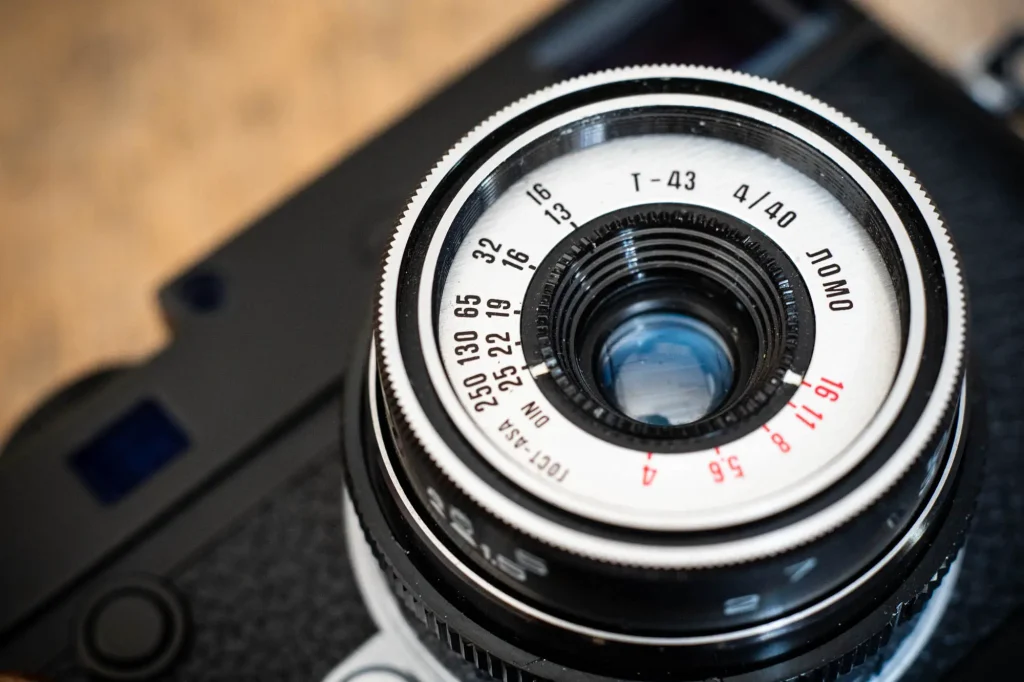
The Lomo T-43 Origin
These cameras are so basic that in some cases the film advance and cocking of the shutter are separate operations. I had one years ago – the first incarnation of the camera in its ‘Cosmic 35’ export version. The mechanism for cocking the shutter was on the side of the lens. Of course, this wasn’t that unusual for a consumer camera designed in the early 50s, but I remember falling foul of it at least a couple of times with double exposures.
In fact, the lens used for this conversion isn’t from one of the very early versions of the Smena-8. It’s actually from the Smena Symbol, which was a later and relatively more advanced model – that is to say, the advancing the film also cocks the shutter.
I can tell it’s from this version as the lens barrel has focusing symbols on it for focusing at portrait, group portrait, full length portrait, and buildings distances. These sorts of symbols give the camera away as very much a consumer-oriented model – it doesn’t even have a depth of field scale.
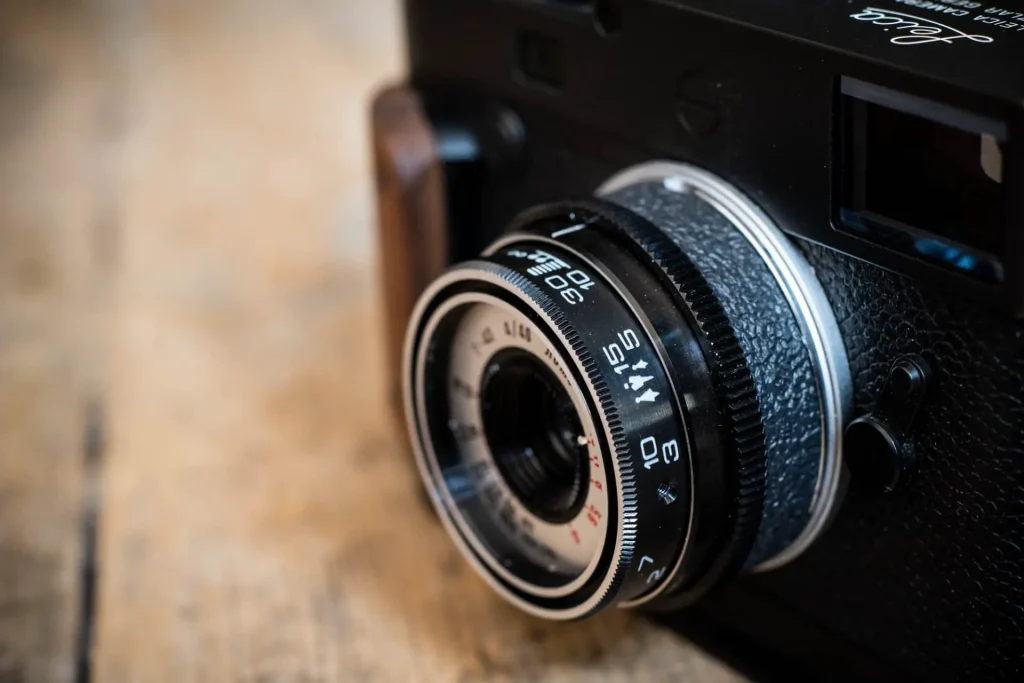
Optical properties
But, alongside the fairly basic camera origins of the lens comes some interesting optical properties. It is, after all, a Lomo lens, and all know, writing “Lomo” in your ebay description doubles the value of any camera you list… so it must be good, right? Well, as always, “good” is highly subjective. Obviously, if you’re looking for modern lens rendering that’s not what your going to get from a 1950s designed triplet.
If on the other hand you’re looking for lower contrast, a tendency to flare when pointed even in the vaguest direction of sunlight, a vintage but still somehow vivid colour pallet, swirly bokeh, good central sharpness with falloff toward the edges of the frame and an overall gentle rendering, this optic might be for you.
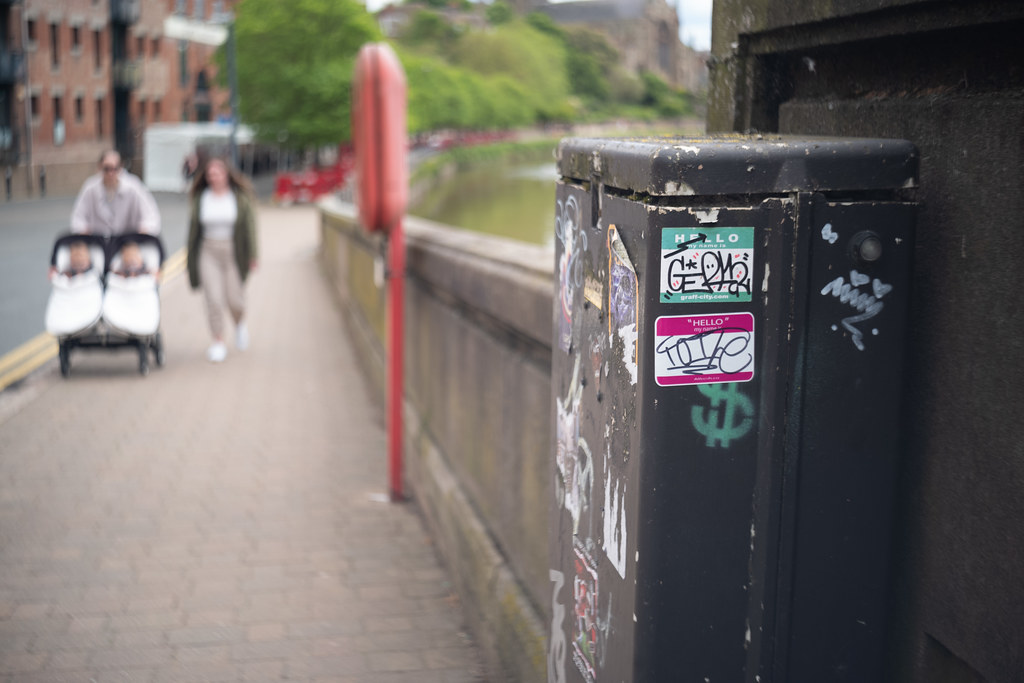

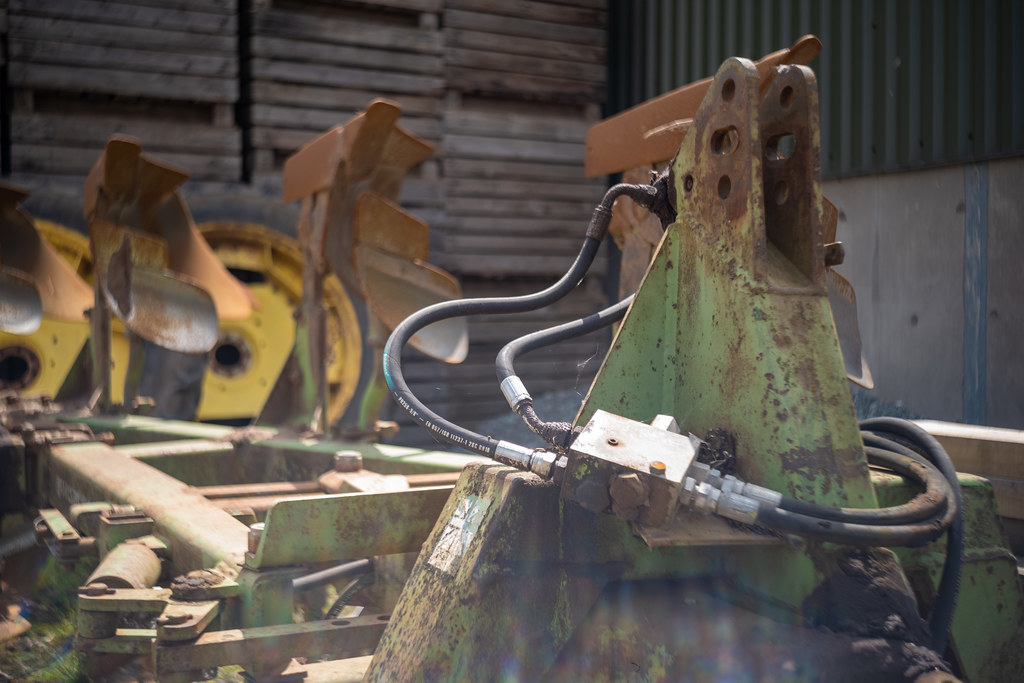

The Lomo T-43 Conversion
What really matters here though is how good the conversion is. Well, I would say, it’s pretty good! The PPP Cosmic a simple conversion that seems to be achieved by using as much of the original parts as possible with 3D printed parts glued to it. Don’t get too excited though, there is no rangefinder coupling, meaning focusing is achieved via distance scale and symbols on the lens. The distance scale is accurate though, and infinity is where it should be!
The conversion makes use of the original aperture and focusing mechanisms, and in the case of the one I have here, the original components were obviously taken from a camera that was in good physical condition. The housing of the lens is very clean – in fact whilst it has visible signs of use, it isn’t scratched and all the numbers, symbols and logos are intact.
Looking in the back, there is a part of the original lens mechanics and evidence of glue residue, but otherwise it’s a clean job that looks to keep the optics true.
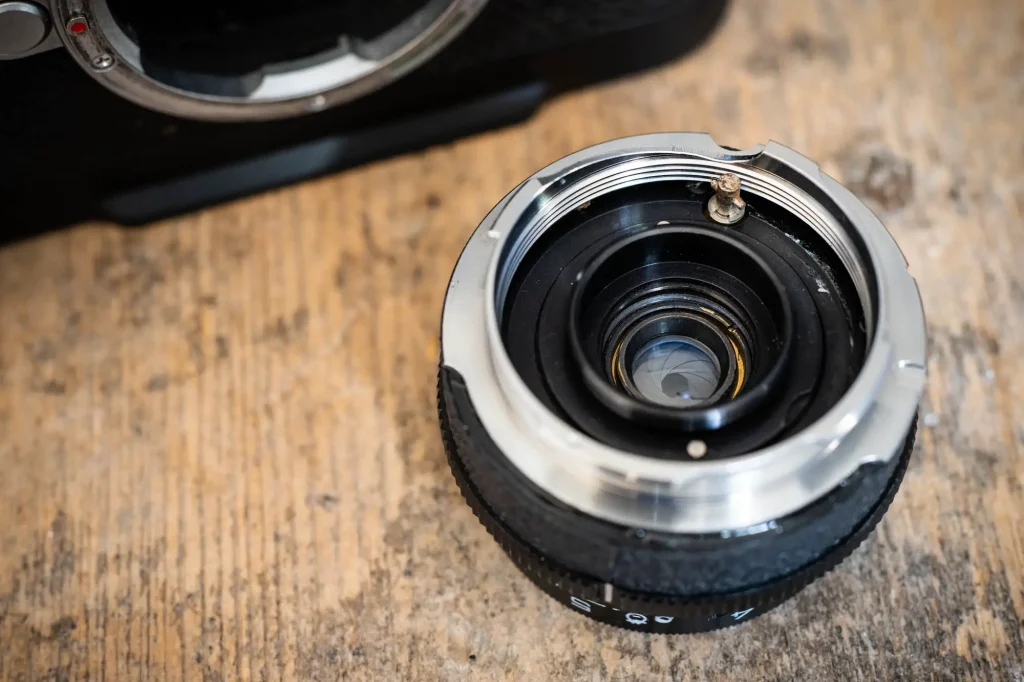
I’m not, I must admit, overly sure about the leatherette wrapped around the 3D printed parts of the PPP Cosmic – I’ve levelled the same criticism at Chris when he does this – but that’s a personal taste thing, I think, and to be fair it does suit it somehow.
On to the back of the 3D printed part is glued a Leica LTM to M-mount converter that brings up the 35/135 frame lines. One slight criticism of the mount converter used on the copy I have here is that it’s one designed for early lenses with an infinity lock. As such, it has the cutout that would allows the infinity lock to swing around the lower right and bottom of the lens. This might not mean anything to film or mirrorless digital shooters, but if you have a digital Leica with a 6-bit code reader and live view you’ll either have to switch automatic lens recognition off, or put a bit of tape over the gap it creates if you want to use live view. If you don’t, light will get in the gap and switch the live view off as if you’ve taken the lens off.
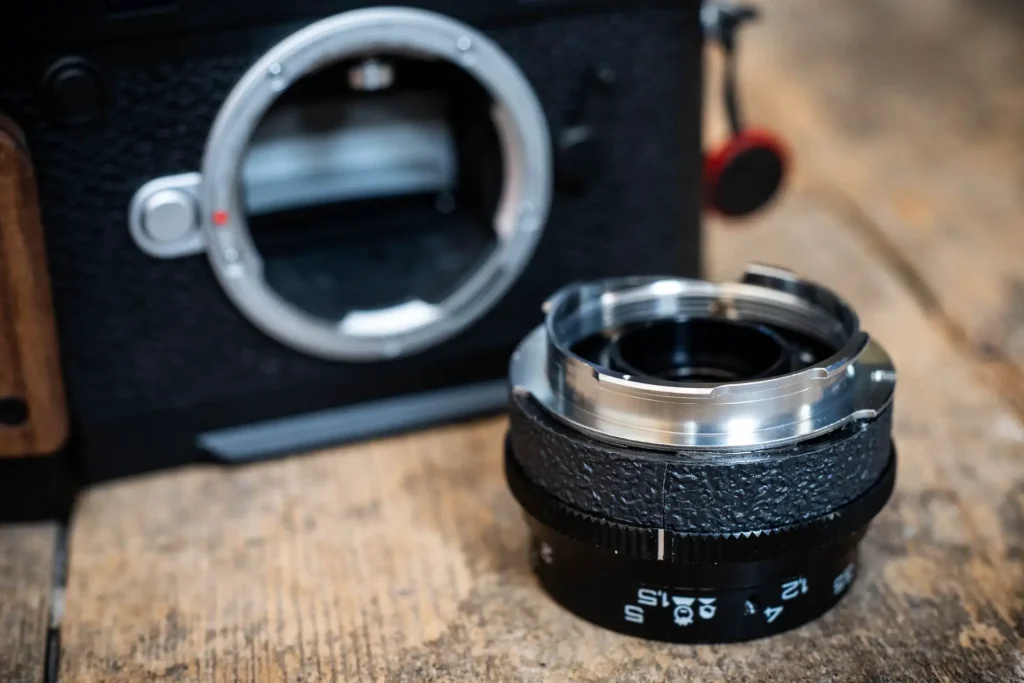
The PPP Cosmic in use
The mechanics of the PPP Cosmic have clearly been nicely cleaned and lubricated in the process of conversion. The focusing is very smooth, or at least, as smooth as you could expect from a lens of this origin. The aperture control which is accessed at the front of the lens moves freely with the tip of a forefinger too.
I must admit, I’m not a massive fan of lenses that use symbols for focusing, I find them a little distracting and prefer to rely on distances and moreover a depth of field scales. That said, I got used to the lack of DoF scale pretty quickly. With the lens only being an f/4, focusing is pretty easy too, even wide open.
I shot the PPP Cosmic exclusively on my M10-P. With this lens using a cutout mount adapter as I’ve said, this meant I had to bit a bit of tape over the edge of the lens mount to use it in live view. Fortunately, on the occasion I went out with it to test it properly I happened to have a roll of black electrical tape in my bag. I’m like a boy scout, me!
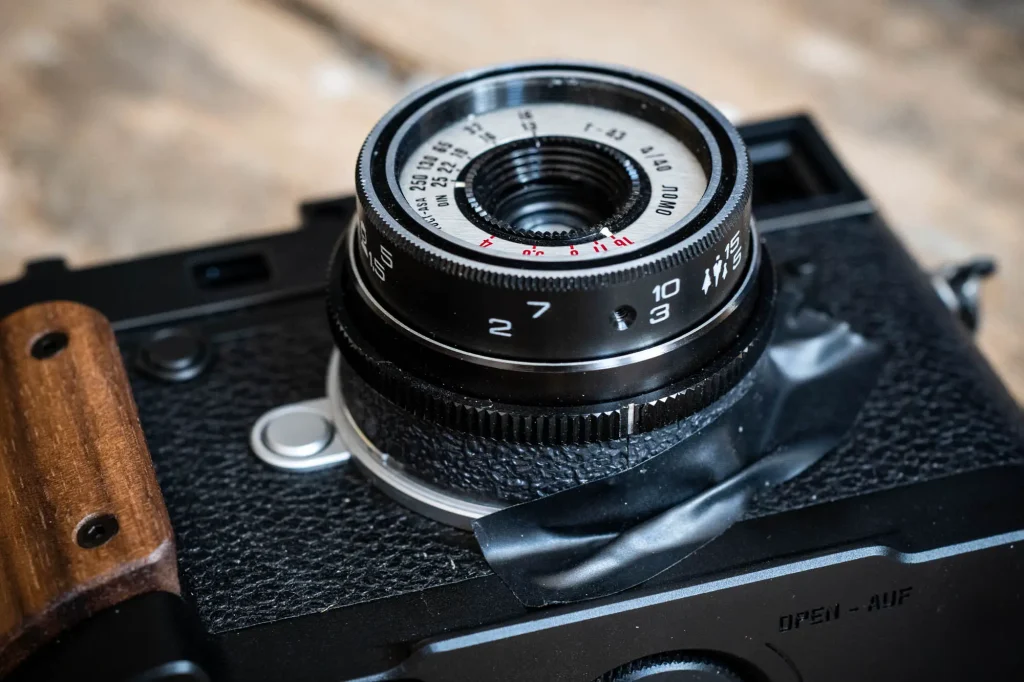
Once it was taped up and working properly on the camera, I was able to use it without much thought at all. For a large part, I just shot it as a scale focus lens. I tend to think of older “character” lenses as lenses I use more wider open, but with this PPP Cosmic being an f/4, wide open isn’t that wide anyway. I also found it to still have a nice character when stopped down. It’s still quite low contrast even at f/8 and still has a nice colour palette and gentle overall rendering.
That said, I was intrigued to see how it shot wider-open closer up. Like all older lenses, this is where some of the stronger character traits really come into play. Surprisingly, it’s still quite sharp in the centre, though thanks I guess to the lower contrast it didn’t trigger the focus peaking on the M10-P very effectively. This is actually one of the reasons I’ve been using my Sony more lately, but that’s a story for another day.
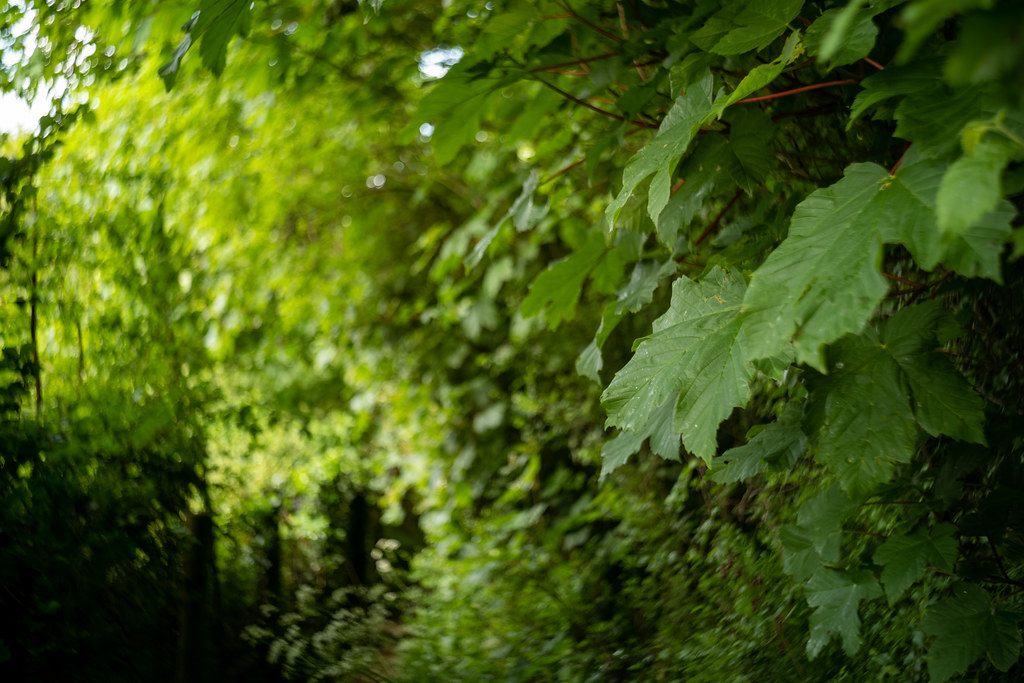
Something else possibly worth noting is that the focus throw is quite long. This isn’t an issue if you use it as a scale focus lens, but if like me you are using it on a digital Leica with live view relying on the focus peaking you might find yourself focus hunting a bit. A long throw feels useful for precision on fast lenses, here it just feels a bit cumbersome. Of course, none of that is the fault of the conversion as such. Using it on a film camera as a scale focus lens, or even a mirrorless with better focus peaking would result is a better user experience, I would imagine.
The Viewfinder (& the Fancy Box)
There’s two things the PPP Cosmic lens came with that I haven’t yet spoken about. The first being the fancy box. A fancy box makes a big difference to how well a product is received by a customer. The box this lens comes in is almost more fancy than the lens itself. Very nice!
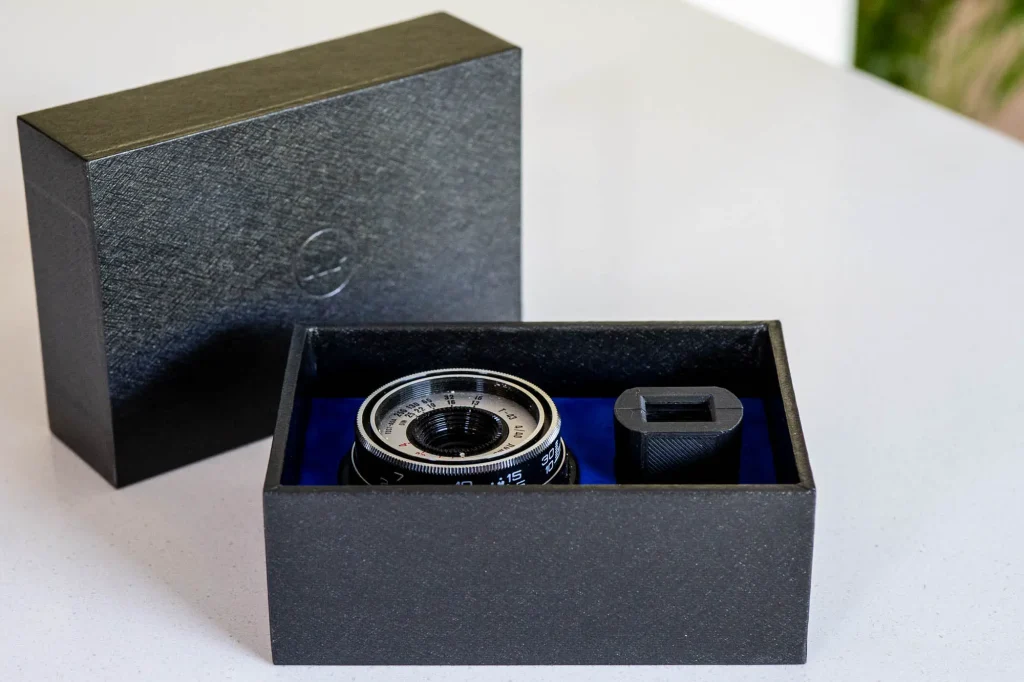
The second thing is a viewfinder. I didn’t actually use the viewfinder – it was a little loose on my Leica. The viewfinder fit issue is one I am very familiar with, so I find it hard to level criticism at Pierro for this. Despite this lack of perfect fit on my specific camera, it is otherwise very nicely made. He used the optics out of the original camera and rehoused them in 3D printed plastic. There are nicer viewfinders out there, sure, but for the fact that this comes with the lens, in the fancy box, I was quite impressed!
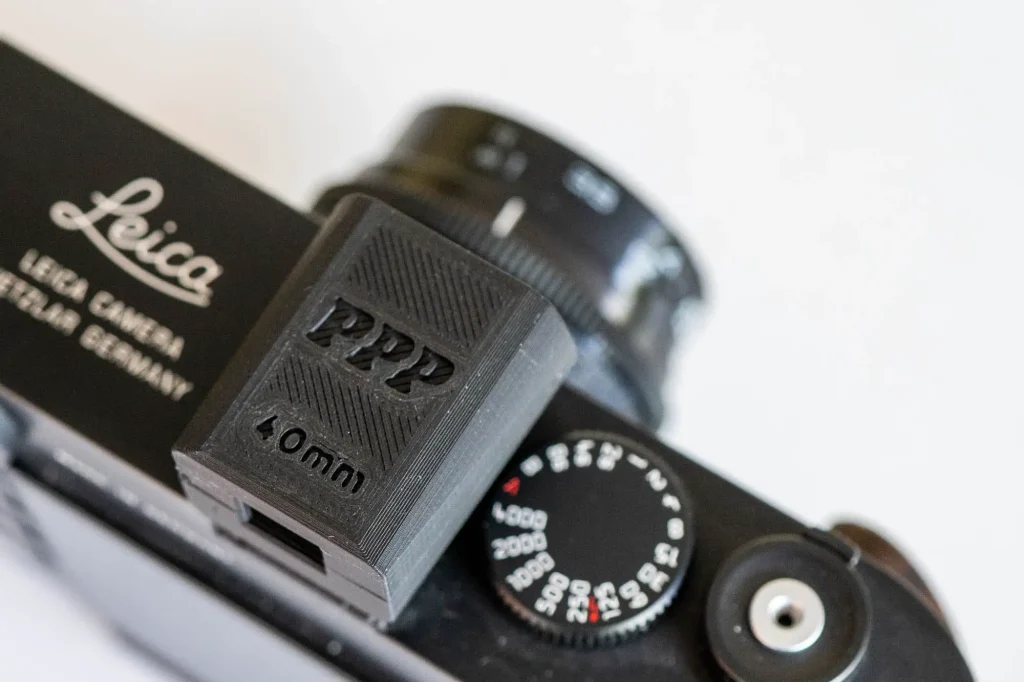
More photos

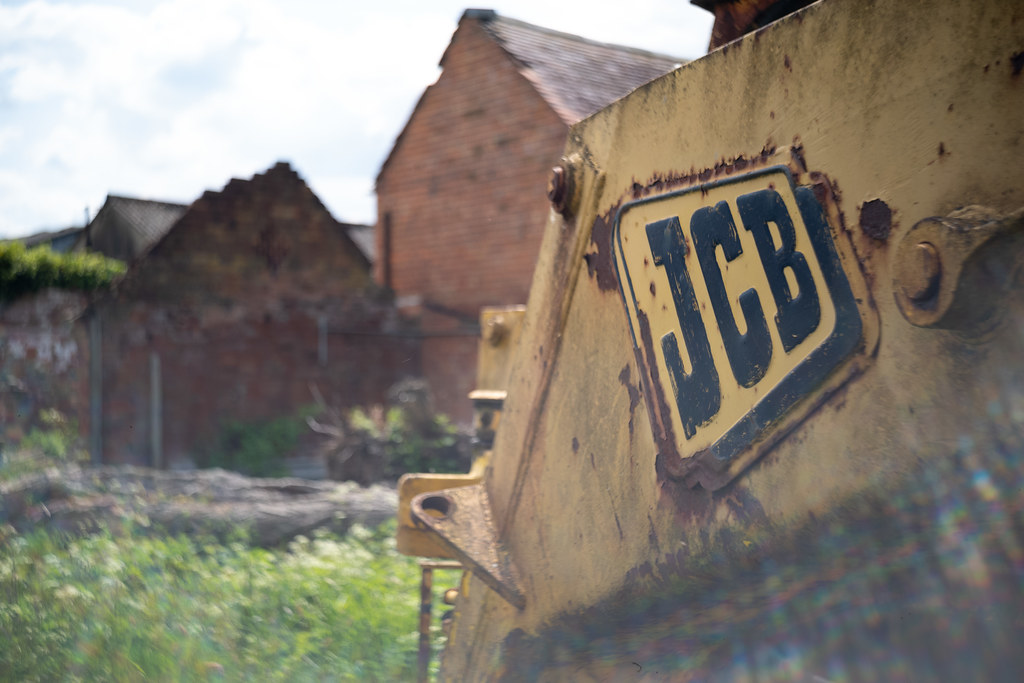

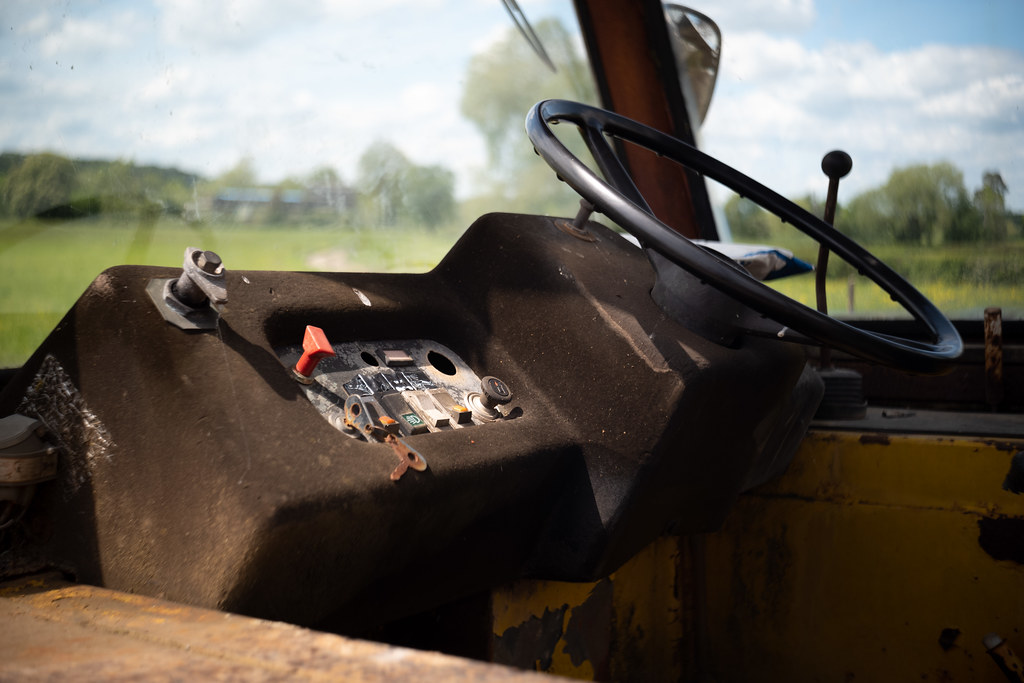
You can find a few more photos here
Final thoughts
The PPP Cosmic conversion is not rangefinder coupled, it doesn’t have a depth of field scale, instead relying of distances and symbols to set focus. There are also some visible signs of the conversion that give away its origins as a modified lens made out of 3D printed parts. But, despite all this, it feels solidly put together, is made out of well sourced parts, focuses accurately to its scale, fits nicely on my cameras and has a look about it that – despite me not being all that keen on the leatherette part – somehow suits it too.
I also quite like the results. Having not shot with the camera one of these lenses comes from for years, I only had a basic idea of what to expect. It’s a basic triplet designed in the 50s, so I wasn’t expecting modern rendering, but beyond that, I wasn’t sure what I would get. I was pleasantly surprised – though I am possibly an easy target. Anything that has some sort of character appeals to me at the moment. The lower contrast and nice colours work well for me, as does the swirly bokeh. It’s not speed machine of course, but I doubt anyone interested in this sort of thing worries too much about lens speed anyway!
Of course, it breaks all the rules. It isn’t particularly perfect for use on a Leica rangefinder – in fact, it’s mount is the only hint that it should be attached to one. Most Leica users will probably scoff at the idea of mounting such a lens on their precious expensive camera… Not me though, it’s fun. It’s also going to be made in very limited numbers, so it doesn’t need to appeal to a lot of people. I bet it will appeal to enough though!
Overall, I’m pretty impressed with this lens conversion, but possibly slightly more than that, I am pleased to see another company productising the process of converting lenses. Piero from PPP has plans to bring more limited run lens conversions to market, as such, I for one will be keeping a close eye on what he gets up to!
The PPP Cosmic Lomo T-43 conversion will officially launch this Wednesday, but until then it is available exclusively for 35mmc. There are currently 9 lenses available for £250 with a limited edition version for £300. If you’re interested in buying one, you can find it on his website here
Share this post:
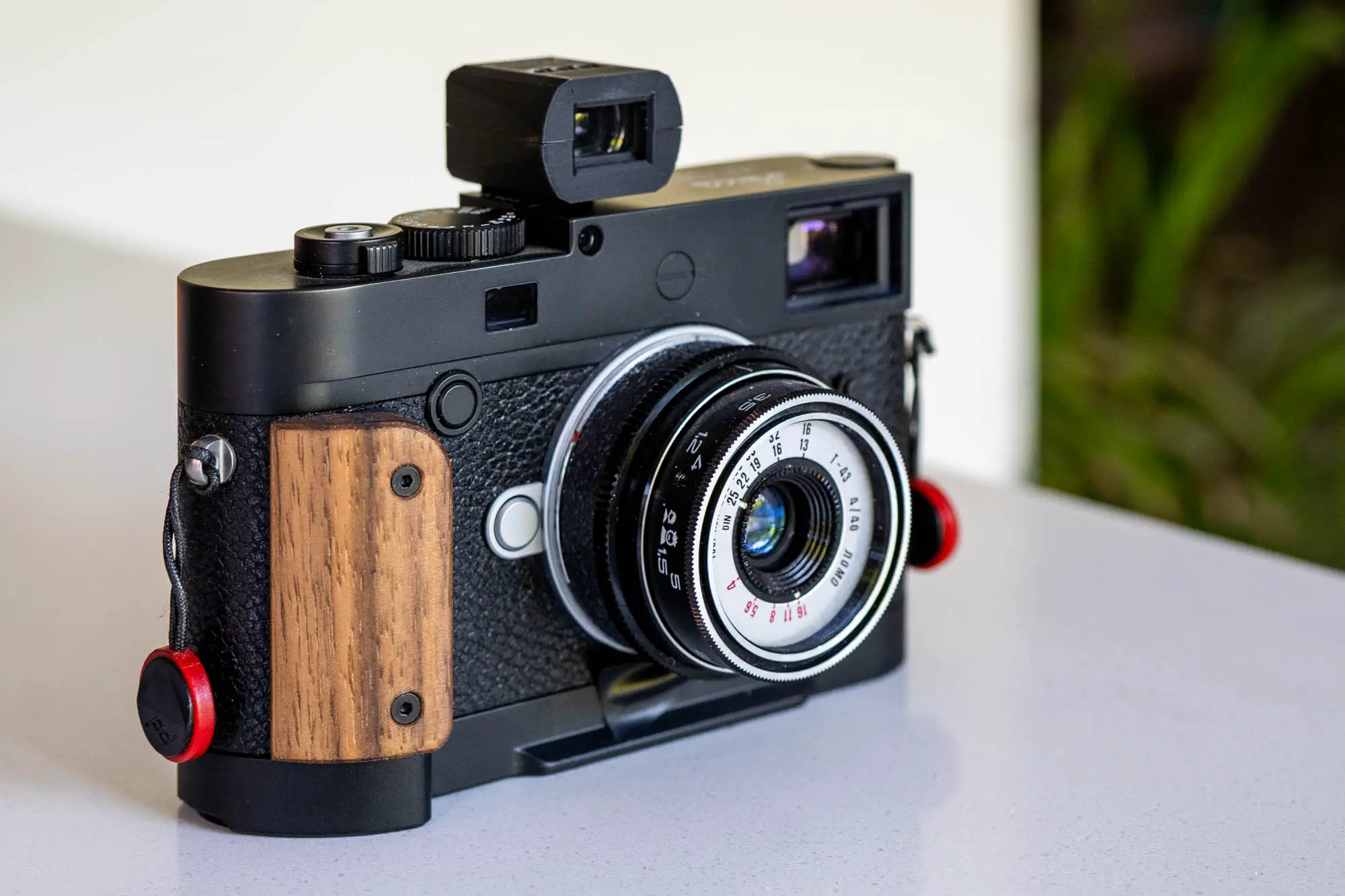








Comments
Jonathan Leavitt on PPP Cosmic Lomo T-43 to Leica M-Mount Lens Conversion Review
Comment posted: 14/06/2021
Comment posted: 14/06/2021
Kodachromeguy on PPP Cosmic Lomo T-43 to Leica M-Mount Lens Conversion Review
Comment posted: 14/06/2021
Laurence Kesterson on PPP Cosmic Lomo T-43 to Leica M-Mount Lens Conversion Review
Comment posted: 14/06/2021
Hayder Assam on PPP Cosmic Lomo T-43 to Leica M-Mount Lens Conversion Review
Comment posted: 14/06/2021
Chris A on PPP Cosmic Lomo T-43 to Leica M-Mount Lens Conversion Review
Comment posted: 14/06/2021
The viewfinder is an especially nice touch, as this also can be saved and reused from the original camera, which certainly helps at this is a non-standard Leica M focal length aside from the CL cameras.
Being a 40mm, its pretty much a perfect-norm, meaning... it matches the human eyes field of view. I suspect one could shoot with both eyes open, one looking through the finder, and have no dis-orientation.
Rich on PPP Cosmic Lomo T-43 to Leica M-Mount Lens Conversion Review
Comment posted: 15/06/2021
Regards and best wishes to PPP!
--Rich
Alden J on PPP Cosmic Lomo T-43 to Leica M-Mount Lens Conversion Review
Comment posted: 16/06/2021
Terry B on PPP Cosmic Lomo T-43 to Leica M-Mount Lens Conversion Review
Comment posted: 20/06/2021
The R/F coupling isn't of concern on my digital cameras, so no loss if it really isn't, but I will report back anyway once it arrives to let you know if it is indeed R/F coupled and how accurate.
Comment posted: 20/06/2021
Comment posted: 20/06/2021
Comment posted: 20/06/2021
Vitaliy Zapevalov on PPP Cosmic Lomo T-43 to Leica M-Mount Lens Conversion Review
Comment posted: 30/06/2021
Comment posted: 30/06/2021
Testing the PPP Cameras Lomo T-43 Leica M-mount conversion - Kosmo Foto on PPP Cosmic Lomo T-43 to Leica M-Mount Lens Conversion Review
Comment posted: 25/07/2021